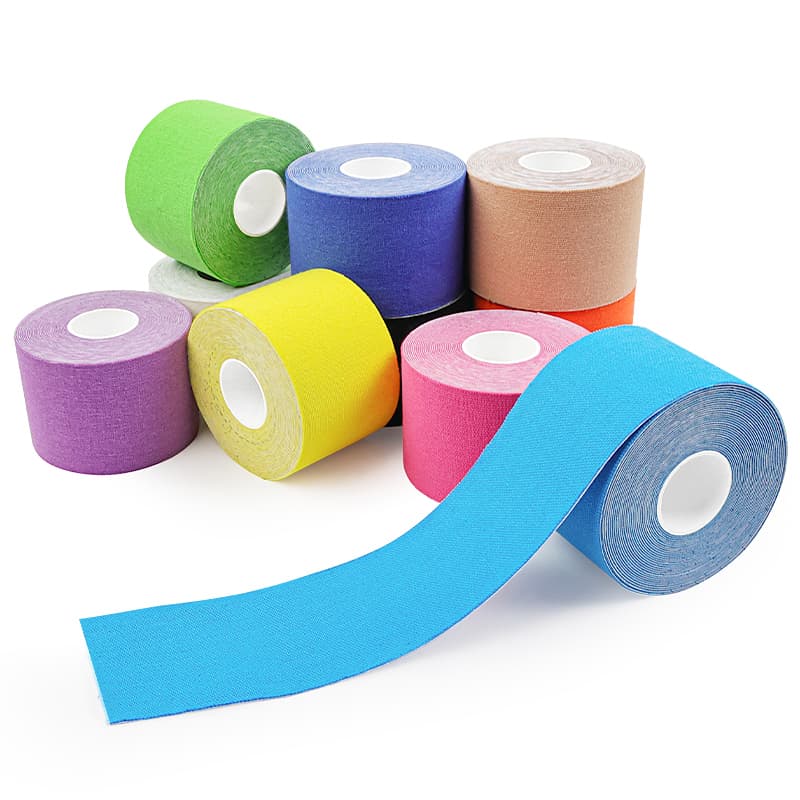During sports, professional athletes or people who love sports use kinesiology tape for the knee to prevent, support, or heal knee problems. It protects the knee joint while improving performance and reducing the risk of serious injury. When you injure your knee, it’s essential to know which sports injury tape strip is suitable for you and the correct way to use it to help you on the road to recovery.

There are many types of cotton kinesiology tape for the knee on the market, and it can be difficult for the uninitiated to know how to buy the proper and effective therapy tape. If you want to learn how to tape your knees safely and effectively and find the best tape for you, read this article in detail. We’ll cover kinesiology tape for various knee problems, and how to use it effectively. So your knees can rest easily and do the sports you love.

Some of the more common knee injuries include:
ACL injury
An ACL injury is a tear of the anterior cruciate ligament (ACL) — one of four ligaments that connect your shinbone to your thighbone. An ACL injury is widespread in people who play basketball, soccer, or other sports and requires sudden direction changes.
Fractures
The knee bones, including the kneecap (patella), can be broken during falls or auto accidents. Also, people whose bones have been weakened by osteoporosis can sometimes sustain a knee fracture simply by stepping wrong.
Torn meniscus
The meniscus is the tough, rubbery cartilage that acts as a shock absorber between your shinbone and thighbone. It can be torn if you suddenly twist your knee while bearing weight.
Knee bursitis
Some knee injuries can cause the bursa to become inflamed, causing swelling at the front of the knee. Bursitis occurs when your bursa becomes frequently irritated, damaged, or infected and produces too much fluid.
Patellar tendinitis
Tendinitis causes irritation and inflammation of one or more tendons — the thick, fibrous tissues that attach muscles to bones. Runners, skiers, cyclists, and those involved in jumping sports and activities may develop patellar tendinitis.
So, how do you prevent and relieve pain in various knee areas? Most people choose to use kinesiology tape for the knee.
What is kinesiology tape for the knee?
Kinesiology tape for the knee is a muscle pain strip made from materials like cotton and spandex. It’s very stretchy and lightweight to the touch. It’s close to the skin and comfortable and often used in sports and physical therapy to support muscles and joints and aid recovery. For the patella or kneecap, kinesiology tape for the knee can be applied in specific ways to provide support, improve circulation, and relieve pain associated with conditions such as patellar tracking disorder or patellar tendonitis.

What does kinesiology tape for the knee do to your knees?
1. Relieve pain and discomfort
Your knees play an important role when your body moves. If injured, other muscle groups (such as the lower back or thighs) will have to pick up the slack, which can cause a chain reaction of stiffness and pain in multiple areas of the body. Therefore, muscle pain strips can help relieve knee pain while relieving or reducing pain elsewhere.
2. Reduce the chance of suffering other injuries
Knee pain is just one of many problems that can arise with your knees, and since knees are a combination of strength and fragility, more problems can quickly develop if you’re not careful. The kinesiology tape for knee supports and protects your knee as you move, helping you avoid aggravating existing injuries or causing new ones.
How to use kinesiology tape for the knee to relieve knee pain?
Make sure the skin on and around your knees is clean and dry.
1. Cut two pieces of sports injury tape strips about 25cm long (the length is determined according to the knee), and make sure the edges are rounded.
2. Sit yourself (or the person you are treating) on a stool and bend your knees at a right angle (90 degrees).
3. Peel off the backing of the first 3 cm of kinesiology tape for the knee and tape it to the top of the kneecap, just above the inside of the knee joint.
Once secured, stretch the kinesiology tape for the knee to 65% elasticity and apply it to the inside of the knee joint.
4. Remove a portion of the second muscle pain strip to secure it, stretch it to 65%, and wrap it around the front of the kneecap.
5. Wipe along the muscle pain strip surface to activate the adhesive.
View kinesiology tape for knee video
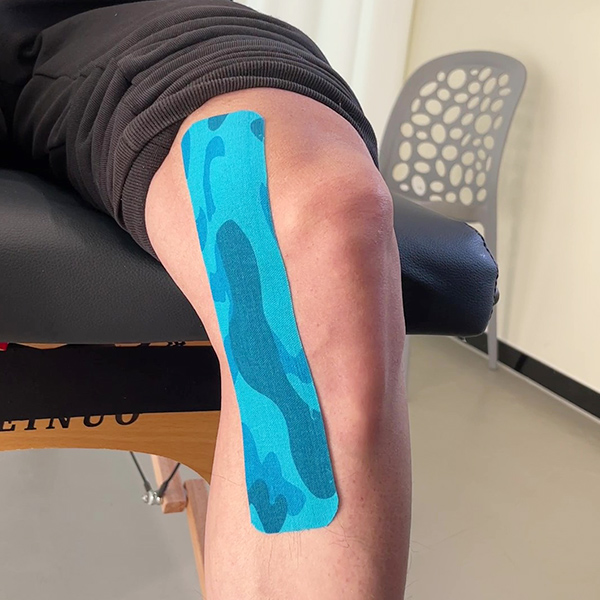
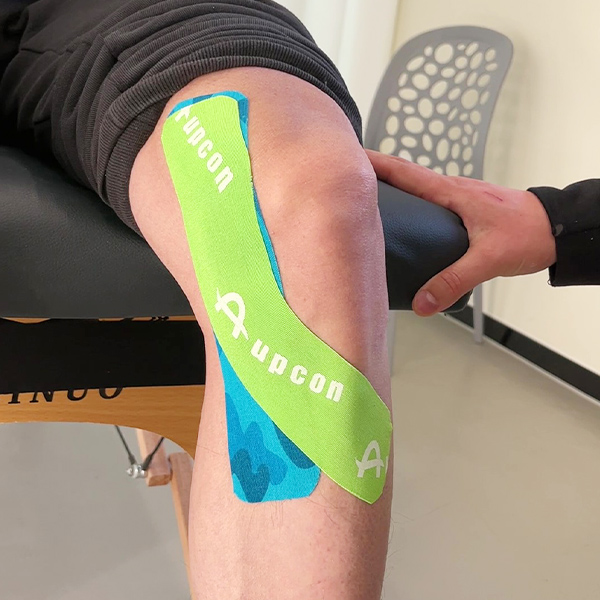
How do you tape your knee to align the patella?
Make sure the skin on and around your knees is clean and dry.
1. Prepare one Y-shaped and two L-shaped kinesiology tapes for the knee (please measure the knee for the specific length and compare it with the picture).
2. Sit yourself (or the person you are treating) on a bench and bend your knees.
3. Peel off 3cm of the Y-tape bottom backing and secure it to the mid-upper thigh. Stretch the remaining therapy tape ends 30% along the left and right ends of the kneecap to fit.
4. Tear off the front ends of the two L-shaped kinesiology tapes for the knee and fix them under the patella. Stretch 50% to the left and right sides to fix the patella.
5. Wipe the sports injury tape strips surface to activate the adhesive.
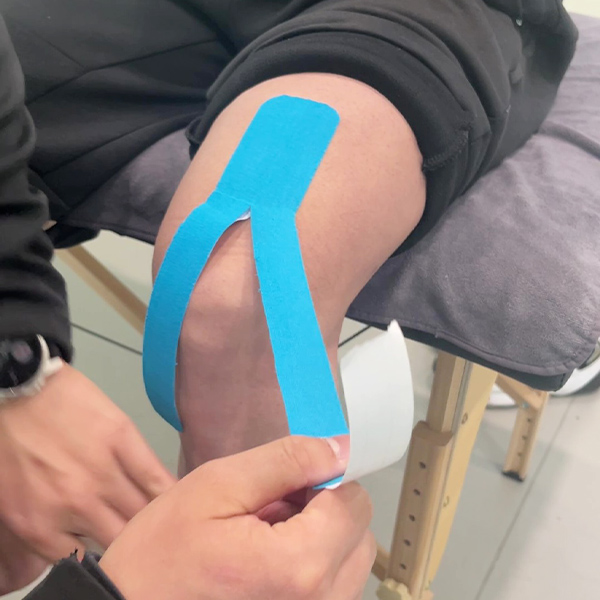
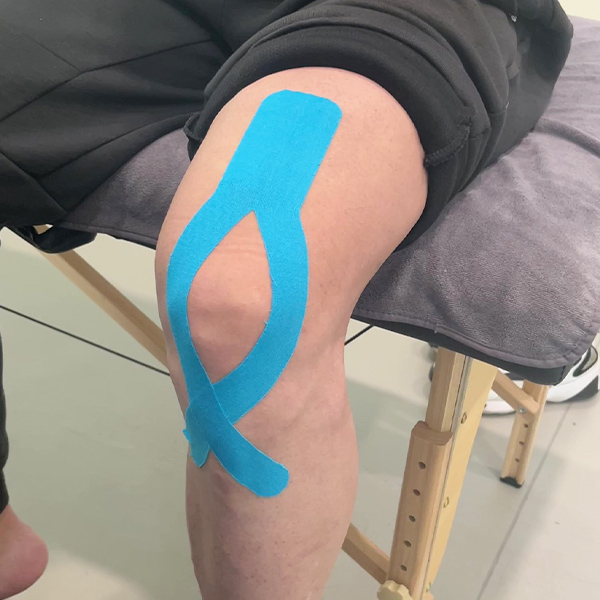
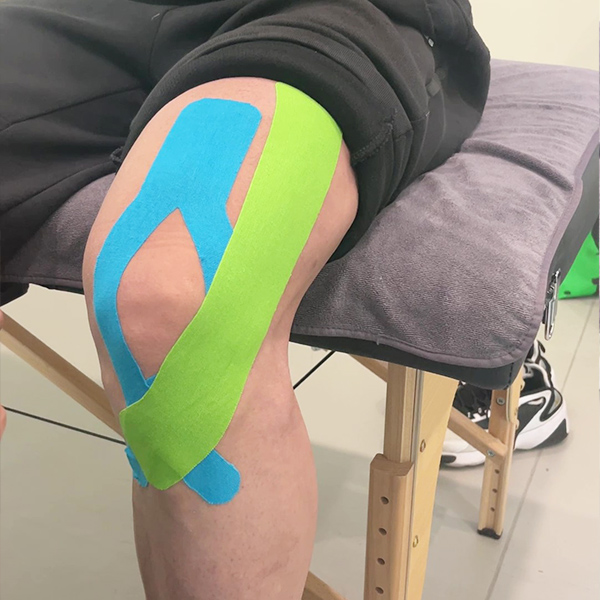

How to safely remove kinesiology tape for the knee?
1. Kinesiology tape for the knee usually has an adhesive different from rigid athletic tape, which is heat-activated. To remove the therapy tape comfortably without disturbing the knee joint, it is recommended to apply oil (for example, olive or baby oil). Rub the oil into and around the therapy tape adhesive to reduce stickiness and leave it on for at least 15 minutes. After applying the oil, the kinesiology tape should come off quickly from the skin in a warm shower or with warm water and a sponge.
2. remove the muscle pain strip slowly and carefully to avoid irritating the skin. The best method is to roll the sports injury tape strip back into place rather than pulling it away from the skin. To reduce discomfort, press down on the skin while removing the muscle pain strip in the opposite direction.
Read on to learn more about how to use kinesiology tape on your knees to address various conditions.
Looking for the cheapest kinesiology tape?
The cheapest kinesiology tape is of course in the factory. The cheapest kinesiology tape is the one without the middleman who makes the difference. For example, AUPCON. The leading kinesiology tape manufacturer in China. Contact us now to get wholesale prices.

